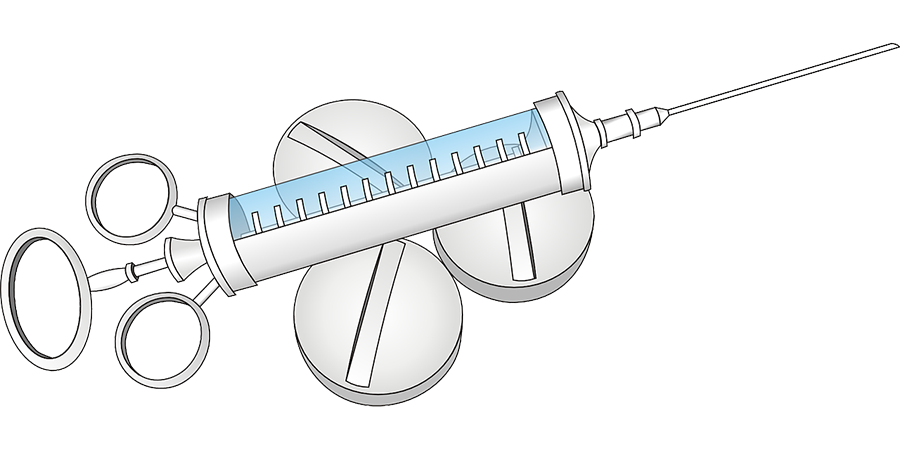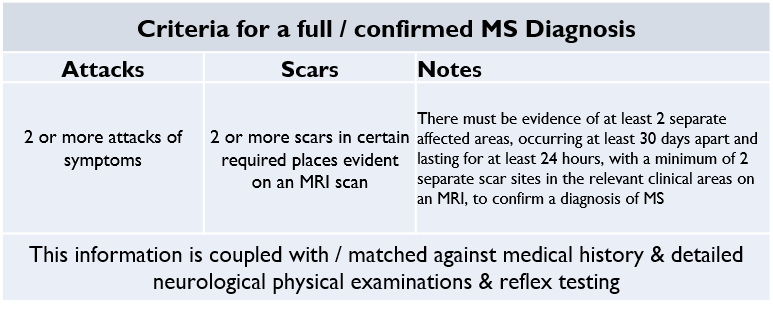I was diagnosed with Relapsing Remitting Multiple Sclerosis in October 2016, 3 weeks before my 40th birthday. I had been ill on and off for just over a year with various things, all of which had been dismissed with other reasons and causes at the time. Four months prior to my diagnosis, I became severely unwell with yet more new symptoms. Following eventual MRI scans and Neurology appointments analysing the previous year of symptoms, my medical history and physical examinations, my diagnosis finally came.
If you or somebody you know or love, has been diagnosed with Multiple Sclerosis, you’ll know it can be a very scary time. Prior to my diagnosis, I’d heard of Multiple Sclerosis but I didn’t really know what it was or what it actually meant for me. I had some pre-conceived ideas but it was really just two words that were never talked about much. Coupled with the symptoms I had been experiencing I drew a quick conclusion that it must be really bad, right? I was confused. I was shocked & I was scared, but strangely, mixed in with those feelings was a bit of relief too. Relief that I finally had an answer. Relief that all these strange and new symptoms I’d been experiencing were related to the same thing, they all had a reason. Relief that those symptoms weren’t just in my head, this was real. To anybody going through an MS diagnosis, these feelings may sound familiar?
As I began researching Multiple Sclerosis to try and make some headway, I’ve got to tell you, I was surprised. My initial understanding was minimalistic and quite a way off the mark. I also discovered I wasn’t alone in that. The vast majority of people in my circles, and even wider, didn’t really understand or know what MS is either.
You’ll find hundreds of booklets, brochures, web pages out there providing a whole wealth of information, but in the beginning that can feel somewhat over-whelming! Where do you start?
So as I began my journey of learning and discovering, I gathered information together and constructed it in an easy to read way, providing a starting point for others in my family and friends circle, removing some of the initial fear and anxiety that I know I was feeling at this uncertain time, as well as my loved ones.
I created a printed pamphlet, using my own words and relevant images from the internet. I soon discovered that, although it was fantastic that my initial reach without even trying, was over 250 people, hard copies were proving a timely and costly approach!
I took some time to pause for thought and actually, I really needed that time to digest my own diagnosis and learn to fit into my new way of life.
I’ve previously read that it can take 2 years to fully digest and accept a diagnosis. For some people it’s less and for some it’s longer. With hindsight now on my side, although I was quickly positive about the situation and the writing had helped me, I think it really did take that long to fully accept, adjust and move forward comfortably.
Now I find myself in a position where I want to pick this up again. I want to write. I want to share. I want to help others. Hopefully in this Blog format, I can reach a wider audience in a more economical way!
So, what is Multiple Sclerosis?
As I mentioned, most people have heard of the term Multiple Sclerosis, or ‘MS’ as it’s called for short and that simply means ‘Many Scars’. Multiple = Many. Sclerosis = Scars. These scars are located on the inside of the body, so you can’t see them and nor can I. They are scars which have developed specifically on the outer coating of the nerves within the brain and spinal cord, known as the Central Nervous System (CNS). The medical name for the outer coating of the nerves is myelin. The only way to see the scars is via an MRI scan of the brain and/or the spine.
The easiest way that MS was described to me is this: Imagine a cable from a plug socket to your kettle or your TV. There are wires inside that cable and the electricity flows from the plug socket, along those wires to the end appliance. The thick plastic coating of the cable is there so that the electricity is contained and can flow smoothly from one end of the wire to the other.

If the outer coating of that cable were to become damaged, and the wires exposed, the electricity might not flow smoothly all the way from one end to the other. Electricity can potentially ‘jump out’ and then become lost at the damaged point. Therefore, you might notice that the end appliance might work intermittently or not quite as it should.

Now, imagine that those wires are nerves within the body and the outer plastic cable is the myelin coating. Imagine the plug source is the brain and the end appliance is a part of the body.
Messages or instructions sent from the brain will travel along the appropriate nerve. If the myelin coating is damaged with a scar, this can stop the message or instruction from flowing smoothly and correctly from the brain to body part that it needs to reach, therefore it could cause the outward symptoms that we see and experience in MS.
What causes these ‘scars’ & this damage?
MS is considered an autoimmune disease. It’s thought that the Immune System gets confused and starts to slowly attack the nerve myelin within the central nervous system, by mistake. This attack on the myelin causes inflammation which then leads to the initial outward symptoms. If badly or repeatedly inflamed, a scar is then left on the myelin.
…And WHY does it do that?
Unfortunately, it is not yet known exactly why or what causes the immune system to become confused and attack the nerve myelin. Research is ongoing all across the world!
Is there a cure?
The simple answer to this is not yet. Over time it’s likely that more scarring will occur, symptoms therefore may increase and/or worsen. Until it’s discovered what causes it to happen in the first place and who might be susceptible, it can’t be prevented.
However, the good news is that research and knowledge has advanced hugely in the last 20 years and a range of medications known as DMD’s “Disease Modifying Drugs” (or sometimes called DMT’s “Disease Modifying Therapies”) have been developed and proven to slow down the progression of the disease and even help with current symptoms.
These Drugs may not be applicable to everybody with MS and they do carry their own side effects. However, there is scientific, statistical evidence that DMD’s can be highly successful. Not all DMD’s will suit everybody. Your Neurologist and MS Nursing team will discuss all the applicable options with you, to help you to decide. Sometimes it can take time to find the right DMD for you.

Diagnosing MS
There are thought to be over 50 different medically defined symptoms of MS. If you imagine our complicated bodies and all the thousands of nerves running all around our body, it’s easier to then understand how many different places there are that scarring could occur and the different symptoms each can cause. There are a handful of the most common symptoms which I’ll talk about in a different blog. The outward effects can differ widely for different people.
Many of the presenting symptoms with MS could be caused by a multitude of other illnesses. That is why it is often difficult to diagnose MS and why it can take years for some people to receive a confirmed diagnosis. There is no single test for MS, although research is ongoing to try to define a blood test that is positively indicative, although this is likely to still be many years away. Medics first need to look at all the different illnesses the symptoms could suggest and then rule out all other reasoning behind these symptoms. Once they have done that, MS may be suspected but can only then be truly diagnosed when a strict criteria is met. This is called The McDonald Criteria.

Testing means used, which can be indictors are, MRI Tests of the brain & spine with contrast, blood tests, lumber puncture (spinal tap) tests, evoked potential sensory testing and medical history along with physical examinations. These are used as clues in building up a full picture with evidence to reach a confirmed diagnosis.
What are the chances of this happening to me?
There are over 130,000 people in the UK with MS and over 2.3million people worldwide. It has not yet been proven to be genetically passed through families, there is suspicion that it could be possible however, in lots of families such as mine, there is absolutely no genetic link at all. Statistics show that if a parent has MS then their child/children have only approximately 5% chance of getting it too. It is also thought that there could be links to certain childhood infection, environment and /or immune system. Research is ongoing.

One of the most important things to understand is that no two cases of MS are the same. Each persons’ MS experience is as unique to them as their finger print.



